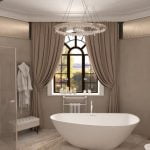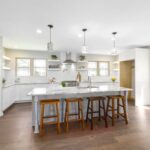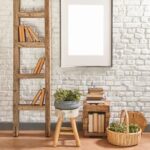Are you looking to refresh your living space and infuse it with a cohesive theme that truly reflects your personal style? In this article, we will guide you on how to make a home decor mood board.
A mood board is a visual representation of an interior design concept, serving as a tool to help you gather and organize ideas for your home decor project. From choosing a theme to finalizing your mood board, we will take you through each step of the process to ensure that your vision comes to life in your living space.
When it comes to creating a cohesive home decor theme, a mood board can be an invaluable tool. It helps bring together all the elements of your design concept in one place, making it easier for you to visualize how different pieces will work together in your living space.
Whether you are starting from scratch or looking to revamp an existing room, a well-crafted mood board can serve as the blueprint for achieving a harmonious and stylish home decor theme.
In the following sections, we will provide tips and guidelines on how to create a home decor mood board from start to finish. We will cover everything from choosing a theme and gathering inspiration, to collecting materials and designing the layout of your mood board. By the end of this article, you’ll be equipped with all the knowledge and tools needed to bring your interior design vision into reality through the art of mood boarding.
Choosing a Theme
When it comes to creating a home decor mood board, choosing the right theme or color scheme is crucial in setting the tone for your entire project. Here are some tips on how to select a theme for your home decor mood board:
1. Consider Your Personal Style: Think about the colors and styles that you naturally gravitate towards. Whether you prefer minimalist, bohemian, or modern decor, your personal style should be the starting point in choosing a theme for your mood board.
2. Take Inspiration from Your Space: Look around your home and identify any existing elements that you want to incorporate into your new decor theme. This could be a favorite piece of artwork, a rug, or even a specific color from your furniture.
3. Research Latest Trends: Browse through interior design magazines, websites, and social media platforms to stay updated on current home decor trends. This can help you gather ideas and inspiration for your mood board theme.
4. Consider the Functionality: Think about the purpose of the space you’re decorating. If it’s a relaxing living room, you may want to opt for calming colors and cozy textures. For a workspace, you might prefer vibrant colors and sleek designs.
5. Experiment with Color Schemes: Don’t be afraid to play with different color combinations before finalizing your theme. You can create a cohesive color palette by using complementary or analogous color schemes.
By following these tips, you can select a theme or color scheme that resonates with your personal style while also setting the tone for a cohesive and visually appealing home decor mood board.
Gathering Inspiration
When creating a home decor mood board, gathering inspiration is a crucial step in the process. The mood board serves as a visual representation of your home decor concept, so it’s essential to find inspiration that resonates with your personal style and vision for your space. Here are some effective ways to find inspiration for your mood board:
- Pinterest: Pinterest is an excellent platform for discovering and saving home decor ideas. Create a Pinterest board specifically dedicated to your home decor project and start pinning images, color palettes, and design elements that inspire you. You can also browse through existing boards and pins to gather even more inspiration.
- Magazines: Home decor magazines are a classic source of inspiration for interior design enthusiasts. Flip through the pages of various magazines to find images, patterns, and color combinations that capture your attention. Cut out the pictures or tear out the pages to incorporate these visuals into your mood board.
- Online Home Decor Websites: There are countless online resources dedicated to home decor and interior design. Visit websites such as Houzz, Apartment Therapy, or Architectural Digest to explore different styles, trends, and decorating ideas. Save images or create digital mood boards using online tools provided by these platforms.
By utilizing these sources of inspiration, you can gather a diverse range of ideas that will contribute to the creation of a cohesive and visually appealing home decor mood board that accurately reflects your personal style and desired aesthetic for your living space.
Collecting Materials
One of the essential steps in creating a home decor mood board is to gather materials that reflect your chosen theme or color scheme. This process involves collecting various items such as fabric swatches, paint samples, and pictures that will help bring your vision to life. Here are some guidelines on how to gather the right materials for your mood board.
Consider Your Theme
Before gathering materials for your mood board, it’s crucial to have a clear idea of the theme or color scheme you want to incorporate into your home decor. Whether it’s a bohemian-inspired theme, a minimalist color palette, or a coastal vibe, having a specific theme in mind will guide you in selecting the appropriate materials for your mood board.
Explore Different Sources
To find the right materials for your mood board, explore different sources of inspiration. Look for fabric swatches at local craft stores, gather paint samples from hardware stores, and search for pictures that resonate with your chosen theme in magazines or online home decor websites. Taking advantage of these various sources will allow you to collect a diverse range of materials for your mood board.
Experiment With Texture and Colors
When collecting materials for your home decor mood board, don’t be afraid to experiment with different textures and colors. Incorporate fabrics with varying textures, explore paint samples in different shades and finishes, and select images that showcase contrasting elements. This experimentation will add depth and visual interest to your mood board, making it more reflective of the overall look you want to achieve in your interior design project.
Layout and Design
When it comes to creating a mood board for your home decor, the layout and design are crucial in bringing your vision to life. A well-organized and visually appealing mood board can help you visualize how all the elements of your home decor theme will come together. Here are some step-by-step instructions on how to arrange and design your mood board effectively.
Start With a Blank Canvas
Begin by gathering a large corkboard, foam board, or poster board to serve as the foundation for your mood board. This will be the space where you arrange all the materials and visuals that inspire your home decor theme. Make sure to choose a size that allows you to include all the elements without feeling cluttered.
Organize Your Materials
Sort through the fabric swatches, paint samples, magazine clippings, and photos that you have collected based on your chosen theme or color scheme. Lay them out in front of you so you can see everything at once and start thinking about how they will fit together on your mood board.
Play With Arrangement
Begin arranging the materials on your blank canvas, starting with larger items like fabric swatches and photos before filling in gaps with smaller elements like paint samples or magazine clippings. Play around with different layouts until you find one that feels balanced and visually pleasing.
By following these steps, you can create an organized and visually stimulating mood board that accurately represents your home decor concept. Experimenting with different arrangements and designs allows you to explore various possibilities before finalizing your vision for your interior design project.
Adding Texture and Layers
When creating a mood board for your home decor, adding texture and layers is essential in bringing your vision to life. By incorporating different elements into your mood board, you can create a more tactile and visually dynamic representation of your decor theme. Here are some creative ideas on how to add texture and layers to your mood board:
One way to add texture to your mood board is by including fabric swatches. Whether it’s the cozy feel of a chunky knit blanket or the luxurious touch of velvet curtains, fabric swatches can visually convey the tactile experience you want to achieve in your home decor. You can also consider adding actual pieces of textured materials such as burlap, lace, or woven rattan to give your mood board a three-dimensional element.
In addition to fabric, incorporating different paper textures can also elevate your mood board. Consider using handmade paper with varying textures and patterns, or layering different types of paper such as vellum or tissue paper to create depth and dimension. Collaging these papers together can add visual interest and make your mood board more interactive.
Another creative idea is to include small objects or natural elements on your mood board. This could be anything from dried flowers, small decorative trinkets, or even a mini sample of a textured wall treatment like stucco or brick. These elements not only add texture but also provide a more holistic representation of the sensory experience you want to create in your home decor.
By adding these elements and considering these creative ideas on how to incorporate texture and layers into your home decor mood board, you can bring a tangible representation of your vision that will guide you through the actualization of your interior design project.
| Texture Elements | Description |
|---|---|
| Fabric Swatches | Cozy knit blankets, luxurious velvet curtains |
| Paper Textures | Handmade paper, vellum, tissue paper |
| Small Objects/Natural Elements | Dried flowers, decorative trinkets, textured wall samples |
Personalization
When creating a mood board for your home decor, it’s important to add personal touches that reflect your unique style and personality. This is what will make your space feel truly like home.
One way to personalize your mood board is by incorporating items that hold sentimental value or have a special meaning to you. For example, if you have a favorite piece of artwork or a family heirloom, consider including it in your mood board to infuse it with personal significance.
Another way to personalize your mood board is by adding elements that showcase your hobbies and interests. If you’re passionate about travel, you can include souvenirs from your adventures or photographs of places that inspire you. If you love nature, consider adding pressed flowers, botanical prints, or natural textures like wood and stone to bring the outdoors inside. These personal touches will not only make your mood board visually appealing but also meaningful to you.
Furthermore, don’t be afraid to incorporate DIY elements into your mood board. Whether it’s handmade crafts, artwork, or custom-made textiles, adding handmade items will give your mood board a one-of-a-kind quality. It’s all about infusing your home decor vision with pieces that tell the story of who you are and what matters most to you.
| Personalization Tip | Description |
|---|---|
| Incorporate sentimental items | Adding items with special meaning can personalize the mood board |
| Showcase hobbies and interests | Include elements that reflect your passions and interests |
| Add DIY elements | Incorporate handmade items for a unique touch |
Finalizing Your Mood Board
In conclusion, creating a home decor mood board is an essential step in the process of designing and planning your interior space. By following the tips and guidelines provided in this article, you can successfully develop a cohesive and visually appealing concept for your home decor theme. From choosing a theme to gathering inspiration and materials, to finally arranging and finalizing your mood board, each step is crucial in bringing your vision to life.
As you finalize your mood board, it’s important to review it carefully and make any necessary adjustments before applying it to your interior design project. This ensures that every detail reflects your unique style and personality, as well as complements the overall aesthetic of your home. By taking the time to personalize your mood board and add texture and layers, you can truly bring your home decor vision to life.
Frequently Asked Questions
How Do You Make a Mood Board for a House?
Making a mood board for a house involves gathering inspiration from various sources such as magazines, online images, and even fabric swatches. The goal is to create a visual representation of the overall aesthetic you want to achieve in your home.
What Do Interior Designers Use for Mood Boards?
Interior designers use a variety of tools and materials for mood boards, including physical samples of paint colors, fabric swatches, flooring materials, and texture samples. They also incorporate digital elements like images and graphics to convey the desired look and feel.
How Do You Create a Concept Board in Interior Design?
Creating a concept board in interior design begins with establishing a central theme or concept for the space. This could be based on a specific style, color scheme, or even a particular feeling that the designer wants to evoke.
Then, visual elements such as photographs, color palettes, material samples, and sketches are compiled to bring the concept to life in a cohesive and inspiring way.

I’m thrilled to be your companion on this exciting journey through the world of home decor and design. With a passion for turning houses into homes and a keen eye for the finer details, I’m here to help you transform your living spaces into beautiful, functional, and meaningful havens.





